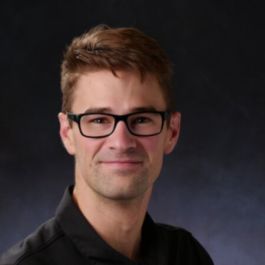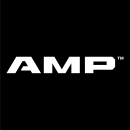Not all lean teams are built the same. Some companies have begun to run lean out of necessity due to the current economic downturn. Others do so strategically, having found a pathway to success by building small, collaborative teams with highly diverse skill sets.
AMP Robotics is a prime example of the latter.
The company, whose software and robots help streamline recycling sorting, has raised $99 million in funding over the past year. The team responsible for the commercialization of AMP’s automated, facility-scale sortation solution is made up of just seven people, including Cam Douglas. Douglas, a product manager, cited the “dynamism” of his role, which includes responsibilities beyond the scope of a typical PM, as one of his main reasons for joining the team.
Nayya also shows what lean teams are capable of. The employee benefits platform recently announced a partnership with insurance giant MetLife, and Jason Swenson, one of four partner growth managers, has been charged with ensuring the tie-up’s success. “Invaluable” is how Swenson described the opportunity to take a leadership role on a project with one of his company’s largest partners.
AMP Robotics and Nayya have both found success by running lean teams. Both are hiring, too, and we spoke with Douglas and Swenson to learn more about what it’s like to work on their teams and the outsized impacts they make in their roles.
AMP Robotics creates artificial intelligence-powered robotic systems designed to slash the cost of sorting recyclables.
Describe the size and makeup of your team. What are your current job responsibilities and what made you join in the first place?
The development team for our facilities business is composed of just seven members, including commercial development, financial modeling, product management and material sourcing functions. We’re responsible for the commercialization of AMP’s automated, facility-scale sortation solution that integrates all of our AI-powered sortation technology. The team is lightweight and agile, with folks working in tandem where skill sets and availability overlap.
I’m a product manager and work on a wide variety of tasks, including new market development, customer requirements generation, technology roadmapping and facility project management. I joined the team in part to be able to participate in this dynamism. I don’t think there have been many weeks where I didn’t work with multiple external parties and every other team within AMP.
“The team is lightweight and agile, with folks working in tandem where skill sets and availability overlap.”
Describe a cool project jobseekers would work on if they were to join your lean-but-growing team.
Joining our team means working on the cutting edge of recycling technology deployment and, more broadly, the waste management industry. AMP’s unique position as a class-leading technology provider and operations outfit enables the company to deploy full-facility waste-sorting solutions at a scale, speed and financial flexibility that’s unmatched in today’s market.
Beyond the commercial excitement and velocity, working to deploy solutions like these at AMP also provides the rare opportunity to have a large-scale impact on the environment and sustainable materials management. As AMP continues to grow rapidly, so will the supply of high-quality recycled material and the role recycling plays in helping to reduce greenhouse gas emissions.
What is an unexpected hat you wear or area of the business you’ve touched in your role?
As a product manager, it’s been interesting to collaborate within our business development team on the commercial process itself. Facility-scale waste-sorting projects by their very nature bring a high degree of complexity regarding the integration of technology, financing, timelines, material flows, zoning, permitting, operating and much more.
It’s been extremely rewarding to integrate each of these disparate aspects of a project and see how our relationships with customers flow as we move from initial introduction through to deal finalization. It opened my eyes to the value of an externally engaged and internally informed development team that’s flexible enough to shape the amorphous beginnings of a project deal into one that eventually becomes a concrete, committed booking.
Nayya is a software platform that helps employees choose and use their benefits.
Describe the size and makeup of your team. What are your current job responsibilities and what made you join in the first place?
I joined this team because I wanted to have the opportunity to create a lasting impact on Nayya’s long-term success. There is no better place to have an outsized impact than working with one of our largest partners. A few of my responsibilities are to support MetLife in presenting Nayya to the world’s largest employers, educating our partners so they can introduce Nayya to their clients and providing client feedback to our product team. For our team of four partner growth managers, the role is an exciting mix of sales, account management and product feedback.
“I joined this team because I wanted to have the opportunity to create a lasting impact on Nayya’s long-term success.”
Describe a cool project jobseekers would work on if they were to join your lean-but-growing team.
One of the more exciting projects is shaping our go-to-market messaging and enablement capabilities to educate employee benefit brokers and consultants, as well as human resources leaders at organizations, on the impacts of Nayya. I have been in situations where marketing and sales have minimal interaction, which creates new and unnecessary hurdles in going to market. It is refreshing to have such a strong partnership with our internal marketing team and our partners’ marketing teams to avoid creating new hurdles in bringing Nayya to employers.
What is an unexpected hat you wear or area of the business you’ve touched in your role?
When starting this role, I did not expect to have an opportunity to be as involved as I have been in building our content and messaging. It has been rewarding to influence the content and overall look and feel of the materials we will use when bringing Nayya’s solution to employers as well as shaping critical presentations, like those used in sales kick-offs.







